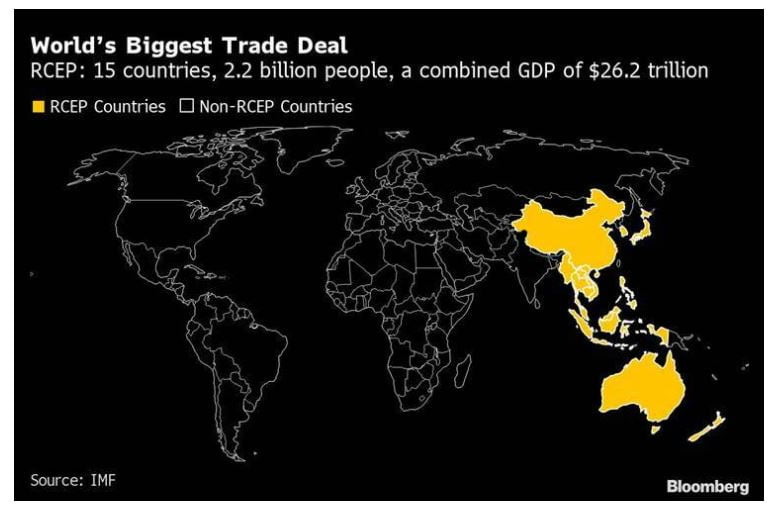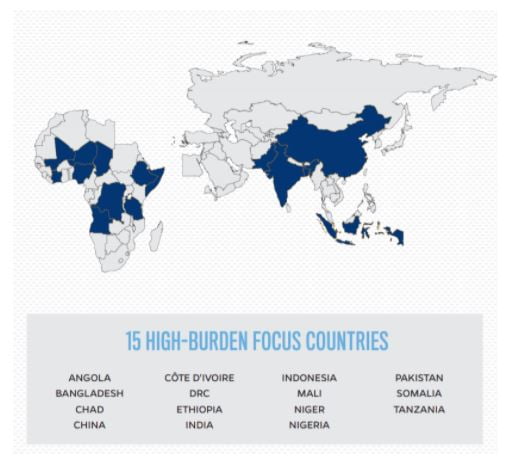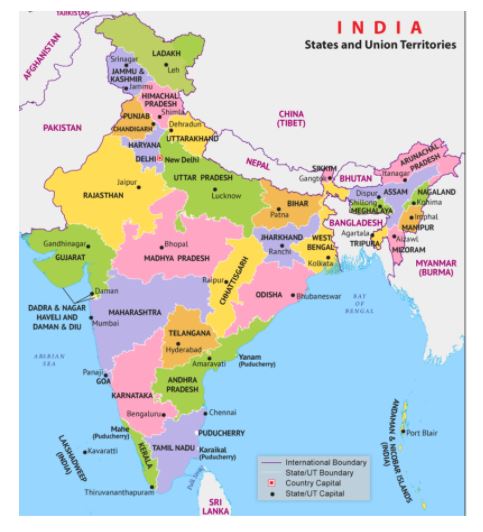IASbaba Daily Prelims Quiz
For Previous Daily Quiz (ARCHIVES) – CLICK HERE
The Current Affairs questions are based on sources like ‘The Hindu’, ‘Indian Express’ and ‘PIB’, which are very important sources for UPSC Prelims Exam. The questions are focused on both the concepts and facts. The topics covered here are generally different from what is being covered under ‘Daily Current Affairs/Daily News Analysis (DNA) and Daily Static Quiz’ to avoid duplication. The questions would be published from Monday to Saturday before 2 PM. One should not spend more than 10 minutes on this initiative.
This is a part of our recently launched, NEW INITIATIVE IASbaba’s INTEGRATED REVISION PLAN (IRP) 2020 – Road Map for the next 100 Days! FREE INITIATIVE!
We will make sure, in the next 4 months not a single day is wasted. All your energies are channelized in the right direction. Trust us! This will make a huge difference in your results this time, provided that you follow this plan sincerely every day without fail.
Gear up and Make the Best Use of this initiative.
Do remember that, “the difference between Ordinary and EXTRA-Ordinary is PRACTICE!!”
To Know More about the Initiative -> CLICK HERE
SCHEDULE/DETAILED PLAN – > CLICK HERE
Important Note:
- Don’t forget to post your marks in the comment section. Also, let us know if you enjoyed today’s test 🙂
- After completing the 5 questions, click on ‘View Questions’ to check your score, time taken and solutions.
Test-summary
0 of 5 questions completed
Questions:
- 1
- 2
- 3
- 4
- 5
Information
To view Solutions, follow these instructions:
- Click on – ‘Start Test’ button
- Solve Questions
- Click on ‘Test Summary’ button
- Click on ‘Finish Test’ button
- Now click on ‘View Questions’ button – here you will see solutions and links.
You have already completed the test before. Hence you can not start it again.
Test is loading...
You must sign in or sign up to start the test.
You have to finish following test, to start this test:
Results
0 of 5 questions answered correctly
Your time:
Time has elapsed
You have scored 0 points out of 0 points, (0)
| Average score |
|
| Your score |
|
Categories
- Not categorized 0%
| Pos. | Name | Entered on | Points | Result |
|---|---|---|---|---|
| Table is loading | ||||
| No data available | ||||
- 1
- 2
- 3
- 4
- 5
- Answered
- Review
-
Question 1 of 5
1. Question
Which of the following country is not a member of Regional Comprehensive Economic Partnership (RCEP):
Correct
Solution (a)
- It consists of 10 Association of Southeast Asian Nations (ASEAN) members i.e Indonesia, Thailand, Singapore, Malaysia, Philippines, Vietnam, Brunei, Cambodia, Myanmar (Burma), Laos , as well as South Korea, China, Japan, Australia and New Zealand.
- Negotiations over the RCEP deal began in 2012. India was also part of the negotiations but it pulled out in 2019 over concerns that lower tariffs could hurt local producers.
 Incorrect
Incorrect
Solution (a)
- It consists of 10 Association of Southeast Asian Nations (ASEAN) members i.e Indonesia, Thailand, Singapore, Malaysia, Philippines, Vietnam, Brunei, Cambodia, Myanmar (Burma), Laos , as well as South Korea, China, Japan, Australia and New Zealand.
- Negotiations over the RCEP deal began in 2012. India was also part of the negotiations but it pulled out in 2019 over concerns that lower tariffs could hurt local producers.

-
Question 2 of 5
2. Question
Consider the following statement with respect to Pneumonia and Diarrhoea Progress Report 2020:
- It has been released by the International Vaccine Access Centre (IVAC).
- India is one among the 15 High Burden Focus Countries according to the report
Which of the above statements is/are correct?
Correct
Solution (c)
- The annual Pneumonia and Diarrhoea Progress Report has been released by the International Vaccine Access Centre (IVAC).
- IVAC, founded in 2009, accelerates equitable access to vaccines through the generation, synthesis, and use of evidence to inform decision-making and action. It is located in the Johns Hopkins Bloomberg School of Public Health, USA.
- It evaluates the progress across 10 high-impact indicators outlined in the Global Action Plan for the Prevention and Control of Pneumonia and Diarrhoea (GAPPD) in the 15 countries with the greatest burden of under-five pneumonia and diarrhoea deaths and how they are delivering key interventions to prevent these.
- These interventions include breastfeeding, immunisation, care-seeking and antibiotics, Oral Rehydration Solution (ORS), and zinc supplementation.
- These measures are proven to help prevent deaths due to these illnesses and could help achieve the Sustainable Development Goal-3 (Good Health and Well-Being) target of reducing under-five mortality to at least as low as 25 per 1,000 live births by 2030.
- This year’s report also addresses the emerging impacts of the Covid-19 pandemic.
- It monitors the coverage of five vaccines which are Diphtheria, Pertussis and Tetanus (DPT) vaccine, Measles-containing-vaccine first dose, Haemophilus influenzae type B, pneumococcal conjugate vaccine (PCV), and rotavirus vaccine.
 Incorrect
Incorrect
Solution (c)
- The annual Pneumonia and Diarrhoea Progress Report has been released by the International Vaccine Access Centre (IVAC).
- IVAC, founded in 2009, accelerates equitable access to vaccines through the generation, synthesis, and use of evidence to inform decision-making and action. It is located in the Johns Hopkins Bloomberg School of Public Health, USA.
- It evaluates the progress across 10 high-impact indicators outlined in the Global Action Plan for the Prevention and Control of Pneumonia and Diarrhoea (GAPPD) in the 15 countries with the greatest burden of under-five pneumonia and diarrhoea deaths and how they are delivering key interventions to prevent these.
- These interventions include breastfeeding, immunisation, care-seeking and antibiotics, Oral Rehydration Solution (ORS), and zinc supplementation.
- These measures are proven to help prevent deaths due to these illnesses and could help achieve the Sustainable Development Goal-3 (Good Health and Well-Being) target of reducing under-five mortality to at least as low as 25 per 1,000 live births by 2030.
- This year’s report also addresses the emerging impacts of the Covid-19 pandemic.
- It monitors the coverage of five vaccines which are Diphtheria, Pertussis and Tetanus (DPT) vaccine, Measles-containing-vaccine first dose, Haemophilus influenzae type B, pneumococcal conjugate vaccine (PCV), and rotavirus vaccine.

-
Question 3 of 5
3. Question
Which of the following Indian States does not share international land border?
Correct
Solution (d)
 Incorrect
Incorrect
Solution (d)

-
Question 4 of 5
4. Question
Consider the following statements:
- Munda Rebellion was led by Birsa Munda in the south of Ranchi in 1945
- Jharkhand state was brought into existence by the Bihar reorganization Act on 15th November, 1970 – the birth anniversary of the legendary Bhagwan Birsa Munda.
Which of the above statements is/are correct?
Correct
Solution (d)
Munda Rebellion:
- It was led by Birsa Munda in the south of Ranchi in 1899-1900.
- The movement identified following forces as the cause of the misery the Mundas were suffering:
- The land policies of the British were destroying their traditional land system.
- Hindu landlords and moneylenders were taking over their land.
- Missionaries were criticising their traditional culture.
- The ‘Ulgulan’ or the ‘Great Tumult’ as the movement came to be called, aimed at establishing Munda Raj by driving out the British.
- Munda used traditional symbols and language to rouse people, urging them to destroy “Ravana” (dikus/outsiders and the Europeans) and establish a kingdom under his leadership.
- Birsa’s followers began targeting the symbols of diku and European power. They attacked police stations and churches, and raided the property of moneylenders and zamindars. They raised the white flag as a symbol of Birsa Raj.
- On 3rd March, 1900, Birsa Munda was arrested by the British police while he was sleeping with his tribal guerilla army at Jamkopai forest in Chakradharpur (Jharkhand).
Jharkhand Foundation Day
- The name “Jharkhand” means “The Land of Forests”. The state was brought into existence by the Bihar reorganization Act on 15th November, 2000 – the birth anniversary of the legendary Bhagwan Birsa Munda.
- Jharkhand shares its border with the states of Bihar to the north, Uttar Pradesh and Chhattisgarh to the west, Odisha to the south, and West Bengal to the east.
- Most of the state lies on the Chotanagpur Plateau, which is the source of the Koel, Damodar, Brahmani, Kharkai, and Subarnarekha rivers, whose upper watersheds lie within Jharkhand.
Incorrect
Solution (d)
Munda Rebellion:
- It was led by Birsa Munda in the south of Ranchi in 1899-1900.
- The movement identified following forces as the cause of the misery the Mundas were suffering:
- The land policies of the British were destroying their traditional land system.
- Hindu landlords and moneylenders were taking over their land.
- Missionaries were criticising their traditional culture.
- The ‘Ulgulan’ or the ‘Great Tumult’ as the movement came to be called, aimed at establishing Munda Raj by driving out the British.
- Munda used traditional symbols and language to rouse people, urging them to destroy “Ravana” (dikus/outsiders and the Europeans) and establish a kingdom under his leadership.
- Birsa’s followers began targeting the symbols of diku and European power. They attacked police stations and churches, and raided the property of moneylenders and zamindars. They raised the white flag as a symbol of Birsa Raj.
- On 3rd March, 1900, Birsa Munda was arrested by the British police while he was sleeping with his tribal guerilla army at Jamkopai forest in Chakradharpur (Jharkhand).
Jharkhand Foundation Day
- The name “Jharkhand” means “The Land of Forests”. The state was brought into existence by the Bihar reorganization Act on 15th November, 2000 – the birth anniversary of the legendary Bhagwan Birsa Munda.
- Jharkhand shares its border with the states of Bihar to the north, Uttar Pradesh and Chhattisgarh to the west, Odisha to the south, and West Bengal to the east.
- Most of the state lies on the Chotanagpur Plateau, which is the source of the Koel, Damodar, Brahmani, Kharkai, and Subarnarekha rivers, whose upper watersheds lie within Jharkhand.
-
Question 5 of 5
5. Question
Recently Lonar Lake was in news, is located in which of the following state?
Correct
Solution (C)
- The Lonar lake at Buldhana district of Maharashtra and have been added to the list of recognised Ramsar sites, a conservation status conferred by International Ramsar Convention on Wetlands.
- The Lonar lake, situated in the Deccan Plateau’s volcanic basalt rock, was created by the impact of a meteor 35,000 to 50,000 years ago.
- The lake is part of Lonar Wildlife Sanctuary which falls under the unified control of the Melghat Tiger Reserve (MTR).
- It is also known as Lonar crater and is a notified National Geo-heritage Monument. Geo-heritage refers to the geological features which are inherently or culturally significant offering insight to earth’s evolution or history to earth science or that can be utilized for education.
- It is the second Ramsar site in Maharashtra after Nandur Madhmeshwar Bird Sanctuary in Nashik district.
- The water in the lake is highly saline and alkaline, containing special microorganisms like anaerobes, Cyanobacteria and phytoplankton.
Incorrect
Solution (C)
- The Lonar lake at Buldhana district of Maharashtra and have been added to the list of recognised Ramsar sites, a conservation status conferred by International Ramsar Convention on Wetlands.
- The Lonar lake, situated in the Deccan Plateau’s volcanic basalt rock, was created by the impact of a meteor 35,000 to 50,000 years ago.
- The lake is part of Lonar Wildlife Sanctuary which falls under the unified control of the Melghat Tiger Reserve (MTR).
- It is also known as Lonar crater and is a notified National Geo-heritage Monument. Geo-heritage refers to the geological features which are inherently or culturally significant offering insight to earth’s evolution or history to earth science or that can be utilized for education.
- It is the second Ramsar site in Maharashtra after Nandur Madhmeshwar Bird Sanctuary in Nashik district.
- The water in the lake is highly saline and alkaline, containing special microorganisms like anaerobes, Cyanobacteria and phytoplankton.












